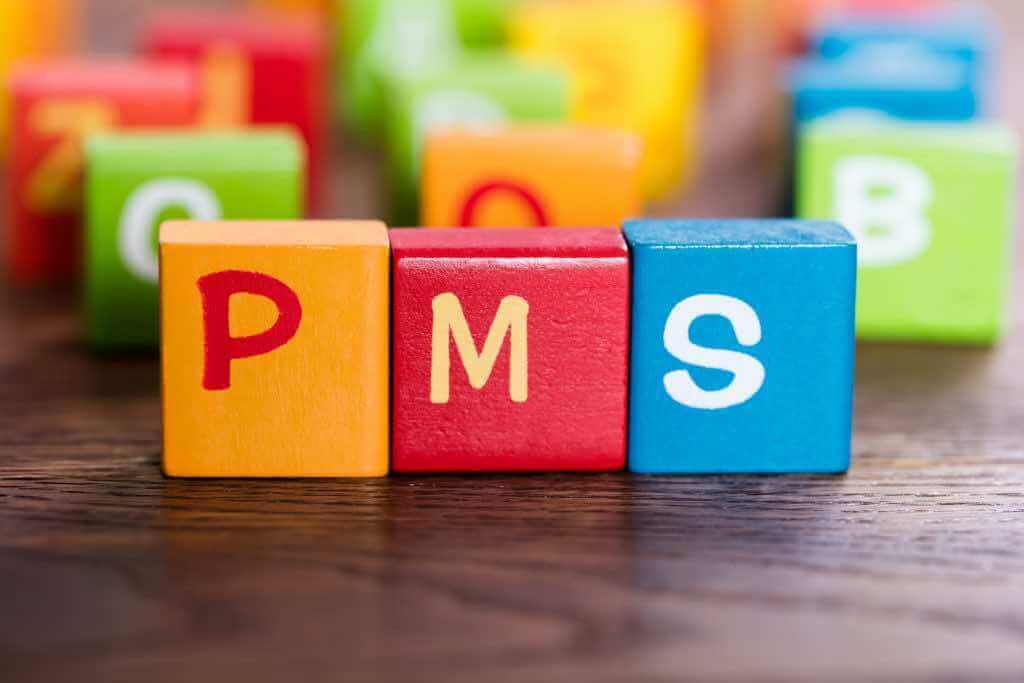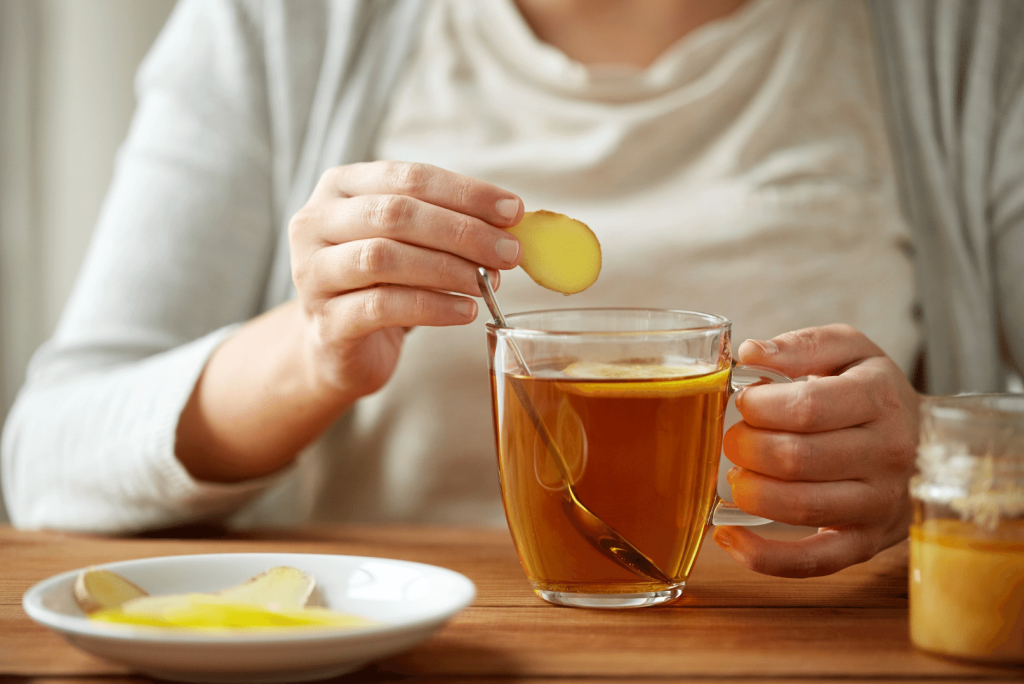
Natural Ways To Say So-Long To PMS Symptoms


Natural Ways To Say So-Long To PMS Symptoms
Do you struggle with any of the following?
- Debilitating cramps
- Cravings
- Fatigue
- Bloating
- Water retention
- Constipation
- Feeling unlike yourself the week leading to your period
Does it cause you to call in sick at work and cancel plans with your friends to indulge in comfort food?
Conventional medicine (such as painkillers and hormonal birth control) tends to only treat symptoms of premenstrual syndrome and other hormone imbalances. These remedies are only effective at relieving symptoms short-term. However, by not addressing your root causes, suppressing symptoms can worsen your long-term hormone imbalances.
Whereas, natural medicine provides evidence-based ways to address the root causes and provide relief through improving your health and hormone balance.
What Is PMS?
Premenstrual Syndrome (PMS) includes uncomfortable symptoms during the days leading up to your period. These symptoms often go away after menstruation begins.
From a Western medical perspective, PMS is linked to the hormonal changes that occur during the menstrual cycle. However, the exact cause is still not fully understood.
Traditional medicines, like Ayurveda and Traditional Chinese Medicine (TCM), relate PMS to a disruption of the natural flow of energy.
Functional medicine looks at the individual’s unique bodily functions. They examine and address underlying issues such as hormone imbalances, inflammation, and nutritional deficiencies.
PMS Symptoms And Their Causes
During the late luteal phase (after ovulation), both progesterone and estrogen are low. Since you have receptors for estrogen and progesterone throughout your body and brain, they affect many of your bodily and mental functions. In the brain, estrogen sensitizes serotonin receptors, whereas progesterone interacts with GABA. This explains why a drop in both hormones can cause a low mood and more irritability.
- Mood swings and irritability: The hormonal changes can affect neurotransmitter balance and contribute to shifts in mood. Irritability, sadness, or anxiousness are common during PMS.
- Bloating: Estrogen and progesterone fluctuations can affect fluid and sodium balance in your body. This causes bloating and water retention.
- Digestive changes: A lot of women get constipated before their periods since progesterone slows down gut movements. Then, as soon as they start to bleed, the constipation goes away or they start going a lot more. However, other gut symptoms such as diarrhea and nausea during the luteal phase are also common
- Breast tenderness: Hormonal imbalances and fluctuations contribute to this symptom.
- Food cravings and increased appetite: Changes in the neurotransmitters serotonin and dopamine can trigger intense cravings for certain foods. Cravings for food high in sugar or carbohydrates are most common because they increase serotonin levels.
- Fatigue: Hormonal changes, disrupted sleep patterns, and increased inflammation and oxidative stress can make you tired.
PMS symptoms and intensity can vary from month to month, or change over time. As you age, progesterone goes down faster than estrogen, which can shorten your cycles and change your PMS symptoms. Life stress, seasons, illnesses, and the environment can all affect your cycle.
So I Have PMS Symptoms, What Makes Me Different From Women Without PMS Symptoms?
Understanding the differences between women with and without PMS symptoms provides an insight into the causes of PMS. By addressing these differences, women with PMS can reduce the severity of symptoms.
Unhealthy Diet: Inflammatory Foods And Nutrient Deficiencies:
Women without PMS symptoms often have a better diet when compared to those with PMS.
Inflammation from a diet high in sugar, bad fats, and gut irritants can worsen PMS.
Nutrient deficiencies can also worsen PMS symptoms. These nutrients support hormone metabolism, neurotransmitter function, and inflammation control.
- Vitamin D
- Magnesium
- Vitamin B6
- Calcium
- Zinc
- Omega 3 Fatty Acids
- Gamma linolenic acid (GLA)

Unhealthy Blood Sugar Control:
Women without PMS symptoms tend to have better blood sugar control compared to those with PMS. Significant blood sugar fluctuations can contribute to:
- Mood swings
- Cravings
- Headaches
- Difficulty concentrating
- And fatigue
Pre-Existing Inflammation
Late in your cycle, your prostaglandins naturally go up to help shed your uterine lining. So, it’s natural to have a little more inflammation during this time of the month. Abdominal cramps, bloating, and mood swings are also symptoms of inflammation. If your body cannot regulate the inflammation or already has some inflammation from other sources, these can all make your PMS worse.
Women without PMS symptoms often have lower levels of inflammation compared to those with PMS. Inflammation contributes to hormonal imbalances and PMS symptoms.
Stress And Poor Sleep
Stress and poor sleep make everything worse by increasing cortisol, inflammation, and prolactin.
Women without PMS symptoms typically have lower stress levels and better sleep quality compared to those with PMS. Higher stress levels and poor sleep patterns worsen hormonal imbalances and emotional well-being..
Hormone Imbalances
Women without PMS symptoms typically have a better balance between estrogen and progesterone levels compared to those with PMS. There are many reasons estrogen and progesterone get out of balance.
Here are some common causes of hormone imbalances:
- Suboptimal hormone production, such as suboptimal progesterone production relative to estrogen. This is quite common as you age, from mid-30s towards menopause. Hormone imbalances happen when your body makes too much estrogen or not enough progesterone.
- Impaired estrogen metabolism: Estrogen is metabolized and cleared from the body through pathways in the liver. If these pathways are blocked or overwhelmed, estrogen is not metabolized and eliminated efficiently. This leads to an accumulation of estrogen in the body and contributes to hormone imbalances.
- Environmental estrogens: Environmental sources of estrogen-like compounds can disrupt the hormonal balance. These are called xenoestrogens. They are in many things we are exposed to every day. Certain plastics, pesticides, herbicides, industrial chemicals, and hormone-treated animal products contain xenoestrogens. They can mimic the effects of estrogen in the body, contributing to hormone imbalances.
- Poor liver function and elimination: The liver plays a vital role in metabolizing and eliminating hormones. Estrogen is one of these hormones. If the liver is not functioning well it may struggle to process estrogen. A high toxic load, nutrient deficiencies, heavy drinking, or liver disease can stress the liver and lead to estrogen accumulation. Also, the liver-processed substances usually go into the bile and are excreted with the stool.
- Stress: Chronic stress disrupts the hormonal balance in the body through pregnenolone steal. Pregnenolone is a precursor to cortisol and other sex hormones. When your body prioritizes producing cortisol in response to stress, it produces less estrogen, progesterone, and testosterone.
- Obesity: Fat cells can produce and store estrogen. Excessive body fat can result in increased estrogen and testosterone production, leading to hormone imbalances.
How To Naturally Reduce Your PMS Symptoms
Take It Easy And Embrace Your Feminine Cycles:
Listen to your body and acknowledge the natural rhythms of your menstrual cycle. Women have been cycling for millions of years. Plan to take it easy the week before your period.
It is important to carve out time for self-care, activities that bring you joy, and stress-management techniques that work for you.
Correct Nutrient Deficiencies:
Eating a balanced diet that includes essential nutrients can support hormonal balance and relieve PMS symptoms. Some nutrients and their roles include:
- Vitamin D: Plays a role in hormone regulation and mood. Adequate sun exposure, supplements, and dietary sources like fatty fish, fortified dairy products, and eggs can help meet vitamin D needs.
- Magnesium: Regulates neurotransmitters, hormones, stress responses, and muscle function. Food sources include leafy green vegetables, nuts, seeds, and whole grains..
- Vitamin B6: Involved in neurotransmitter synthesis and hormone metabolism. Foods rich in vitamin B6 include poultry, fish, bananas, potatoes, and chickpeas.
- Calcium: Helps with mood regulation and muscle function. Good sources include dairy products, leafy greens, tofu, and fortified plant-based milk..
- Zinc: Supports hormone production and immune function. Foods like meat, shellfish, legumes, nuts, and seeds are good sources.
- Omega-3 Fatty Acids: Have anti-inflammatory properties and support hormone balance. Found in fatty fish and algae..
- GLA (Gamma-Linolenic Acid): A type of omega-6 fatty acid found in evening primrose oil and borage oil. May help reduce PMS symptoms, but consult a healthcare professional before use.
Keep in mind many women find better relief for their symptoms when they work with a practitioner to assess for specific deficiencies and introduce therapeutic doses of supplements.
Balance Estrogen Levels And Support Detoxification Of Estrogen Metabolites
Many things can disrupt the delicate balance between estrogen and progesterone levels in the body. Detoxify from excessive estrogen
Estrogen detoxification is an important step in re-balancing estrogen and progesterone levels. Several supplements support estrogen detoxification. Here are some examples:
- Diindolylmethane (DIM): DIM is from cruciferous vegetables like broccoli and cauliflower. It helps with estrogen metabolism. It also encourages the conversion of toxic estrogen metabolites into less harmful forms.
- Indole-3-Carbinol (I3C): I3C is another compound found in cruciferous vegetables. It helps the breakdown of estrogen into less harmful metabolites and supports the body’s detoxification processes.
- Sulforaphane: Sulforaphane is a compound found in broccoli sprouts and other cruciferous vegetables. It enhances the body’s ability to get rid of estrogen by activating detoxification enzymes.
- Calcium-D-Glucarate: Calcium-D-Glucarate is a form of glucaric acid. It supports the liver detoxification processes. It also helps with the elimination of estrogen metabolites and other toxins from the body.
- N-Acetylcysteine (NAC): NAC is an amino acid precursor to glutathione. Glutathione is a powerful antioxidant that supports detoxification processes in the liver. It helps enhance the removal of estrogen and other harmful substances from the body.
Promote Hormonal Balance Through Diet
Consider an overall healthier diet with less processed foods, refined sugar, and caffeine.
Increase Fiber Intake
Fiber plays a role in treating PMS symptoms by moving toxic estrogen metabolites out of the body. Here’s how fiber can help:
- Estrogen detoxification: Fiber acts as a natural bulking agent in the digestive system. It promotes regular bowel movements and prevents constipation. Estrogen metabolites are processed by the liver. They are excreted into the bile and eliminated when you have a bowel movement. Fiber helps with the elimination of estrogen metabolites from the body. It also prevents them from being reabsorbed in the intestines.
- Balancing gut flora: Fiber acts as a prebiotic and provides nourishment to beneficial bacteria in the gut. Healthy gut flora is essential for proper hormone metabolism and elimination. When the gut flora is out of balance, it can affect estrogen metabolism. leading to increased levels of estrogen metabolites. Fiber promotes the growth of beneficial bacteria. This supports a healthy gut environment and optimizes estrogen detoxification.
- Blood sugar regulation: Eat High-fiber foods, proteins, and foods that have a lower glycemic impact. This means that they are digested and absorbed slower. This slower digestion and absorption help stabilize blood sugar levels. It prevents spikes and crashes that can make PMS symptoms worse. To learn more about this, read our article on how to improve blood sugar control.
- Mood and energy support: High-fiber foods help glucose be released evenly into the bloodstream. This provides a steady source of energy throughout the day. A stable energy supply helps regulate mood, reduce mood swings, and maintain energy throughout the day.
Whole grains (if tolerated), fruits, vegetables, legumes, and seeds, can provide the necessary fiber to support estrogen detoxification and digestive health. Aim for a diverse range of fiber sources and gradually increase fiber intake to allow the body to adapt.

Xenoestrogens And Contributing Factors In Toxic Accumulation Of Estrogen Metabolites
Xenoestrogens are synthetic or naturally occurring substances. They copy or interfere with the action of natural estrogens. This leads to hormonal imbalances. Xenoestrogens are present in the environment or ingested through various sources. They can contribute to the toxic accumulation of estrogen metabolites in the body. Minimizing exposure to xenoestrogens helps to promote healthy estrogen metabolism.
Here are some sources of xenoestrogens:
- Environmental pollutants: Xenoestrogens can be found in various environmental pollutants. Industrial chemicals, pesticides, and air pollutants can contain them. These substances enter the environment through industrial processes, agricultural practices, and pollution from vehicles and factories. Exposure to these pollutants can occur through contaminated air, water, and food sources, leading to the accumulation of toxic estrogen metabolite
Examples of environmental xenoestrogens include:
- Polychlorinated biphenyls (PCBs)
- Dioxins
- Organochlorine pesticides
- Endocrine disrupting chemicals (EDCs): EDCs are substances that interfere with the normal functioning of the endocrine system. This includes hormone production, metabolism, and signaling. Many EDCs have estrogenic properties and can disrupt estrogen metabolism. These compounds are often found in everyday products like plastics, food packaging, personal care products, and medications. Prolonged exposure to EDCs can contribute to the toxic accumulation of estrogen metabolites in the body.
Common sources of EDCs include:
- Plasticizers (such as bisphenol A or BPA) and plastic building blocks in plastic water and food containers
- Phthalates
- Flame retardants
- Some pharmaceutical drugs.
- Dietary factors: The food we consume plays a role in estrogen metabolism and the accumulation of estrogen metabolites. Diets high in processed foods, unhealthy fats, and refined sugars can contribute to hormonal imbalances and impaired estrogen metabolism.
- Lifestyle choices: Lifestyle choices can influence estrogen metabolism and the accumulation of estrogen metabolites. Lifestyle choices that include excessive alcohol consumption, smoking, and a sedentary lifestyle can disrupt hormonal balance and impair estrogen metabolism.
- Personal care products: Many personal care products, including cosmetics, lotions, and perfumes, contain chemicals that act as xenoestrogens.
Common ingredients that act as xenoestrogens include:
- Parabens
- Phthalates
- Synthetic fragrances in scented products including soap, cosmetics, perfumes, and even pads and tampons
These enter the body through the skin and disrupt estrogen metabolism. Natural and organic personal care products that don’t have these chemicals help reduce exposure to xenoestrogens.
Conscious choices about products and sources of xenoestrogens in the environment reduce exposure. This reduces the toxic accumulation of estrogen metabolites and supports optimal estrogen metabolism.
Mind-Body Practices
Practices such as meditation, yoga, and deep breathing can reduce stress and improve your mood. These techniques promote relaxation, hormonal balance, and emotional resilience. All contribute to a reduction in PMS symptoms. Incorporating these practices into your daily routine can help you manage stress and daily challenges.
Herbal Medicine
A 2016 study conducted in Australia examined the effectiveness of complementary and alternative medicine (CAM) in managing menstrual pain among women aged 34-39. The study involved 7,427 participants and found that women with endometriosis and premenstrual syndrome (PMS) were more likely to use:
- CAM therapies: massage therapy, acupuncture, and naturopathy/herbalism
- CAM products: vitamins/minerals and yoga/meditation.
These findings suggest that CAM may offer potential effective relief for menstrual discomfort.
Herbs have been used for thousands of years to treat many common conditions, including PMS. Common herbs that are traditionally used for PMS include:
- Chaste tree berry (Vitex agnus-castus): Chaste tree berry is a traditional herbal medicine for women’s health issues. Research shows it helps regulate hormonal balance. Research has shown it increases progesterone levels. This can reduce symptoms such as breast tenderness, mood swings, and irritability associated with PMS.
- Shatavari (Asparagus racemosus): Shatavari is an Ayurvedic herb known for its hormone-balancing properties. It has been used for various women’s health concerns, including PMS. Traditional uses are to help relieve mood swings, irritability, and hormonal imbalances.
- Evening primrose oil (Oenothera biennis): Evening primrose oil is rich in gamma-linolenic acid (GLA). GLA is an omega-6 fatty acid. Supplementation with evening primrose oil may help reduce breast pain and tenderness. It may also help with symptoms like bloating, irritability, and depression.
- Dong quai (Angelica sinensis): Dong quai is a traditional Chinese herb. It is used to help balance hormones. Traditionally it is used to solve menstrual irregularities. It is also used to ease PMS symptoms like cramps, irregular cycles, mood swings, and hot flashes.
- Black cohosh (Actaea racemosa): Black cohosh is traditionally used for menopausal symptoms. It may also offer benefits for PMS by reducing the severity and frequency of PMS symptoms. This includes mood swings, irritability, and hot flashes.
- St. John’s wort (Hypericum perforatum): St. John’s wort is a well-known herb used for its antidepressant properties. St. John’s wort may help ease symptoms of PMS-related depression and mood swings.
- Ginger (Zingiber officinale): Ginger has inflammation-balancing properties that may provide relief from PMS symptoms such as menstrual discomfort. It has been studied for its potential to reduce the severity and duration of menstrual pain associated with PMS..
- Cinnamon (Cinnamomum verum): Cinnamon has been traditionally used to support menstrual health. Cinnamon has been used to regulate menstrual cycles, reduce heavy bleeding, and reduce menstrual pain and cramps..
Many of these herbs have contraindications with certain conditions and may interact with medications. So, always consult with a qualified herbalist and pharmacist (if you’re on medications) before introducing herbal remedies. Always inform your doctor of any changes in your diet or supplement regimens.

Traditional Chinese Medicine
Acupuncture and Chinese herbal medicines have been used to treat PMS for hundreds of years. They use the principles of Traditional Chinese Medicine (TCM) to identify and treat the imbalances causing your PMS symptoms. It aims to restore balance and improve the flow of energy in the body. Research has shown that it relieves both physical and emotional symptoms of PMS.
A 2022 study in South Korea explored natural ways for primary care providers to improve symptoms of PMS. Herbal Medicines and TCM formulas are used widely across Korea and many of these formulas are covered by health insurance when prescribed by a medical professional.
They surveyed studies and collaborated with experts and medical professionals. They concluded that patients taking traditional herbal medicines reported that they had less intense pain for a shorter amount of time. Patients also reported that they had to use less pharmaceutical pain relievers.
A 2020 study surveyed 38 random controlled trials that included 3982 participants. They focused on the TCM formula Si Wu Tang in treating period discomfort. It showed that this formula may work just as well or better than conventional treatments. It also suggested that Si Wu Tang had less side effects.
A 2018 review explored the effectiveness of acupuncture and acupressure as potential treatments for PMS. The review included five trials involving 277 women. The findings suggested that both acupuncture and acupressure may reduce overall PMS symptoms compared to sham (non-therapeutic) interventions.
Acupuncture was found to alleviate the severity of mood-related and physical symptoms, while acupressure showed promise in reducing the number of women experiencing moderate to severe PMS symptoms. Further research is needed to confirm these results and compare these interventions with standard treatments for PMS.
In a 2021 study, researchers investigated the effects of acupuncture on premenstrual syndrome (PMS). They recruited twenty PMS patients and used brain imaging to examine changes before and after acupuncture treatment.
The results showed that acupuncture at a specific acupoint called SP6 had positive effects on the brain activity of PMS patients. It helped regulate abnormal brain regions related to emotions, cognition, memory, pain, and vision. Although there was no control group in the study, these findings suggest that acupuncture at SP6 could be a promising therapy for PMS by addressing abnormal brain activity..
Putting It All Together
Managing and reducing PMS symptoms naturally is possible through various approaches. Everybody experiences their menstrual cycle differently. Implementing these strategies may help reduce the physical and emotional discomfort associated with PMS.
The underlying causes of PMS are usually:
- Hormonal imbalances
- Inflammation
- Nutrient deficiencies
- Stress
- And poor sleep
By understanding these, your medical provider can help develop effective management techniques.
It is important to remember that every individual is unique, and what works for one person may not work for another. Consulting with a healthcare professional is essential for determining the most appropriate strategies for managing your specific PMS symptoms.
By implementing these natural approaches and finding what works best for you, it is possible to reduce the impact of PMS and improve your overall quality of life. Remember: you are not alone in dealing with PMS, and there is hope for finding relief from its symptoms

References
- Stachenfeld NS. Hormonal changes during menopause and the impact on fluid regulation. Reprod Sci. 2014;21(5):555-561. doi:10.1177/1933719113518992
- Bernstein MT, Graff LA, Avery L, Palatnick C, Parnerowski K, Targownik LE. Gastrointestinal symptoms before and during menses in healthy women. BMC Womens Health. 2014;14(1):14. doi:10.1186/1472-6874-14-14
- Mitsuhashi R, Sawai A, Kiyohara K, Shiraki H, Nakata Y. Factors associated with the prevalence and severity of menstrual-related symptoms: A systematic review and meta-analysis. Int J Environ Res Public Health. 2022;20(1):569. doi:10.3390/ijerph20010569
- Schmidt PJ, Nieman LK, Danaceau MA, Adams LF, Rubinow DR. Differential behavioral effects of gonadal steroids in women with and in those without premenstrual syndrome. N Engl J Med. 1998;338(4):209-216. doi:10.1056/NEJM199801223380401
- Rossignol AM, Bonnlander H. Caffeine-containing beverages, total fluid consumption, and premenstrual syndrome. Am J Public Health. 1990;80(9):1106-1110. doi:10.2105/ajph.80.9.1106
- Perkonigg A, Yonkers KA, Pfister H, Lieb R, Wittchen HU. Risk factors for premenstrual dysphoric disorder in a community sample of young women: the role of traumatic events and posttraumatic stress disorder. J Clin Psychiatry. 2004;65(10):1314-1322. doi:10.4088/jcp.v65n1004
- Sundermann EE, Maki PM, Bishop JR. A review of estrogen receptor alpha gene (ESR1) polymorphisms, mood, and cognition. Menopause. 2010;17(4):874-886. doi:10.1097/gme.0b013e3181df4a19
- Carlini SV, Lanza di Scalea T, McNally ST, Lester J, Deligiannidis KM. Management of premenstrual dysphoric disorder: A scoping review. Int J Womens Health. 2022;14:1783-1801. doi:10.2147/IJWH.S297062
- Huang YM, Chien WC, Cheng CG, Chang YH, Chung CH, Cheng CA. Females with diabetes mellitus increased the incidence of premenstrual syndrome. Life (Basel). 2022;12(6):777. doi:10.3390/life12060777
- Dupont J, Scaramuzzi RJ. Insulin signalling and glucose transport in the ovary and ovarian function during the ovarian cycle. Biochem J. 2016;473(11):1483-1501. doi:10.1042/bcj20160124
- Bäckström T, Andersson A, Andreé L, et al. Pathogenesis in menstrual cycle-linked CNS disorders. Ann N Y Acad Sci. 2003;1007(1):42-53. doi:10.1196/annals.1286.005
- Baker FC, Kahan TL, Trinder J, Colrain IM. Sleep quality and the sleep electroencephalogram in women with severe premenstrual syndrome. Sleep. 2007;30(10):1283-1291. doi:10.1093/sleep/30.10.1283
- Rocks D, Kundakovic M. Hippocampus-based behavioral, structural, and molecular dynamics across the estrous cycle. J Neuroendocrinol. 2023;35(2):e13216. doi:10.1111/jne.13216
- Usman SB, Indusekhar R, O’Brien S. Hormonal management of premenstrual syndrome. Best Pract Res Clin Obstet Gynaecol. 2008;22(2):251-260. doi:10.1016/j.bpobgyn.2007.07.001
- Yen JY, Lin HC, Lin PC, Liu TL, Long CY, Ko CH. Early- and late-luteal-phase estrogen and progesterone levels of women with premenstrual dysphoric disorder. Int J Environ Res Public Health. 2019;16(22):4352. doi:10.3390/ijerph16224352
- McCabe D, Lisy K, Lockwood C, Colbeck M. The impact of essential fatty acid, B vitamins, vitamin C, magnesium and zinc supplementation on stress levels in women: a systematic review: A systematic review. JBI Database System Rev Implement Rep. 2017;15(2):402-453. doi:10.11124/JBISRIR-2016-002965
- Sultana A, Heyat MBB, Rahman K, et al. A systematic review and meta-analysis of premenstrual syndrome with special emphasis on herbal medicine and nutritional supplements. Pharmaceuticals (Basel). 2022;15(11):1371. doi:10.3390/ph15111371
- Boyle N, Lawton C, Dye L. The effects of magnesium supplementation on subjective anxiety and stress—A systematic review. Nutrients. 2017;9(5):429. doi:10.3390/nu9050429
- De Souza MC, Walker AF, Robinson PA, Bolland K. A synergistic effect of a daily supplement for 1 month of 200 mg magnesium plus 50 mg vitamin B6 for the relief of anxiety-related premenstrual symptoms: a randomized, double-blind, crossover study. J Womens Health Gend Based Med. 2000;9(2):131-139. doi:10.1089/152460900318623
- Thys-Jacobs S, Starkey P, Bernstein D, Tian J. Calcium carbonate and the premenstrual syndrome: effects on premenstrual and menstrual symptoms. Premenstrual Syndrome Study Group. Am J Obstet Gynecol. 1998;179(2):444-452. doi:10.1016/s0002-9378(98)70377-1
- Rahmani E, Samimi M, Ebrahimi FA, et al. The effects of omega-3 fatty acids and vitamin E co-supplementation on gene expression of lipoprotein(a) and oxidized low-density lipoprotein, lipid profiles and biomarkers of oxidative stress in patients with polycystic ovary syndrome. Mol Cell Endocrinol. 2017;439:247-255. doi:10.1016/j.mce.2016.09.008
- Mirmasoumi G, Fazilati M, Foroozanfard F, et al. The effects of flaxseed oil omega-3 fatty acids supplementation on metabolic status of patients with polycystic ovary syndrome: A randomized, double-blind, placebo-controlled trial. Exp Clin Endocrinol Diabetes. 2018;126(4):222-228. doi:10.1055/s-0043-119751
- Williams DE. Indoles derived from glucobrassicin: Cancer chemoprevention by indole-3-carbinol and 3,3’-diindolylmethane. Front Nutr. 2021;8:734334. doi:10.3389/fnut.2021.734334
- Lord RS, Bongiovanni B, Bralley JA. Estrogen metabolism and the diet-cancer connection: rationale for assessing the ratio of urinary hydroxylated estrogen metabolites. Altern Med Rev. 2002;7(2):112-129.
- Michnovicz JJ, Adlercreutz H, Bradlow HL. Changes in levels of urinary estrogen metabolites after oral indole-3-carbinol treatment in humans. J Natl Cancer Inst. 1997;89(10):718-723. doi:10.1093/jnci/89.10.718
- Michnovicz JJ, Bradlow HL. Altered estrogen metabolism and excretion in humans following consumption of indole-3-carbinol. Nutr Cancer. 1991;16(1):59-66. doi:10.1080/01635589109514141
- Cao S, Hu S, Jiang P, Zhang Z, Li L, Wu Q. Effects of sulforaphane on breast cancer based on metabolome and microbiome. Food Sci Nutr. 2023;11(5):2277-2287. doi:10.1002/fsn3.3168
- Ayyadurai VAS, Deonikar P, Fields C. Mechanistic understanding of D-glucaric acid to support liver detoxification essential to muscle health using a computational systems biology approach. Nutrients. 2023;15(3). doi:10.3390/nu15030733
- Rafiee B, Karbalay-Doust S, Tabei SMB, et al. Effects of N-acetylcysteine and metformin treatment on the stereopathological characteristics of uterus and ovary. Eur J Transl Myol. 2022;32(2). doi:10.4081/ejtm.2022.10409
- Fisher C, Adams J, Hickman L, Sibbritt D. The use of complementary and alternative medicine by 7427 Australian women with cyclic perimenstrual pain and discomfort: a cross-sectional study. BMC Complement Altern Med. 2016;16(1):129. doi:10.1186/s12906-016-1119-8
- Sultana A, Rahman K, Heyat MBB, Sumbul, Akhtar F, Muaad AY. Role of inflammation, oxidative stress, and mitochondrial changes in premenstrual psychosomatic behavioral symptoms with anti-inflammatory, antioxidant herbs, and nutritional supplements. Oxid Med Cell Longev. 2022;2022:3599246. doi:10.1155/2022/3599246
- Moini Jazani A, Nasimi Doost Azgomi H, Nasimi Doost Azgomi A, Nasimi Doost Azgomi R. A comprehensive review of clinical studies with herbal medicine on polycystic ovary syndrome (PCOS). Daru. 2019;27(2):863-877. doi:10.1007/s40199-019-00312-0
- Jiao M, Liu X, Ren Y, et al. Comparison of herbal medicines used for women’s menstruation diseases in different areas of the world. Front Pharmacol. 2021;12:751207. doi:10.3389/fphar.2021.751207
- Kim PW, Kim S, Kim DI, et al. Development of the Korean medicine core outcome set for primary dysmenorrhea (COS-PD-KM) for herbal medicine treatment of primary dysmenorrhea in primary clinics. Int J Environ Res Public Health. 2022;19(22):15321. doi:10.3390/ijerph192215321
- Li G, Liu A, Lin M, Liao S, Wen Z. Chinese herbal formula siwutang for treating primary dysmenorrhea: A systematic review and meta-analysis of randomized controlled trials. Maturitas. 2020;138:26-35. doi:10.1016/j.maturitas.2020.03.009
- Armour M, Ee CC, Hao J, Wilson TM, Yao SS, Smith CA. Acupuncture and acupressure for premenstrual syndrome. Cochrane Database Syst Rev. 2018;8(8):CD005290. doi:10.1002/14651858.CD005290.pub2
- Duan G, Chen Y, Pang Y, et al. Altered fractional amplitude of low-frequency fluctuation in women with premenstrual syndrome via acupuncture at Sanyinjiao (SP6). Ann Gen Psychiatry. 2021;20(1):29. doi:10.1186/s12991-021-00349-z